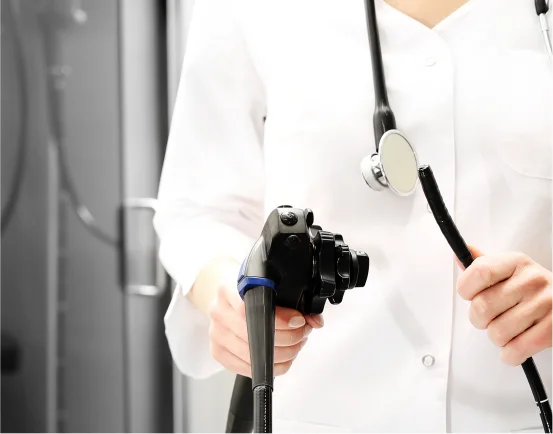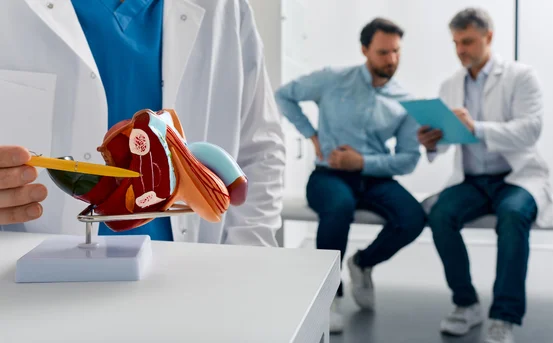Cardioversion therapy is a medical procedure used to restore a normal heart rhythm in people with abnormal heartbeats (arrhythmias). It is commonly used for conditions like atrial fibrillation (AFib), atrial flutter, and ventricular tachycardia. Cardioversion helps reset the heart’s electrical signals, allowing it to beat normally. Depending on the patient’s condition and the cause of the arrhythmia, doctors choose from two main types of cardioversion therapy: electrical and pharmacological.
A healthy heart beats in a regular, coordinated rhythm that ensures efficient blood flow throughout the body. However, for millions of people worldwide, this rhythm can become irregular, too fast, or too slow—a condition known as arrhythmia. Among the most common types of arrhythmias are atrial fibrillation (AFib) and atrial flutter, both of which can significantly increase the risk of stroke, heart failure, fatigue, and reduced quality of life if left untreated.
What Is Cardioversion?
Cardioversion is a procedure used to correct abnormal heart rhythms (arrhythmias) by restoring a regular rhythm (also called sinus rhythm). When the heart beats too fast, too slow, or irregularly, it can’t pump blood effectively. This may lead to symptoms such as fatigue, dizziness, palpitations, chest discomfort, or even an increased risk of stroke.
Cardioversion is most commonly used for atrial fibrillation, but it may also be recommended for atrial flutter, supraventricular tachycardia, or ventricular tachycardia that is not immediately life-threatening.
Types of Cardioversion Therapy
There are two primary types of cardioversion therapy :-
Electrical Cardioversion (Synchronized Cardioversion)
Electrical cardioversion involves delivering a controlled electric shock to the heart through electrodes placed on the chest (and sometimes the back). This brief shock stops the heart’s abnormal rhythm and allows it to reset to a normal rhythm.
How It Works :-
-
Performed in a hospital setting under short-acting sedation or anesthesia.
-
Sticky pads or paddles are placed on the chest (or chest and back).
-
A machine called a defibrillator delivers a timed electrical shock synchronized with the heartbeat.
-
The procedure takes only a few minutes.
Ideal Candidates :-
-
Patients with persistent atrial fibrillation or atrial flutter.
-
Those who have not responded to medications.
-
Patients who require urgent rhythm correction due to worsening symptoms.
Benefits :-
-
Immediate results normal rhythm is usually restored instantly.
-
Higher success rate compared to medication alone.
-
Useful in emergency and non-emergency situations.
Risks and Side Effects :-
-
Skin redness or minor burns at the electrode sites.
-
Brief irregular rhythm before stabilization.
-
Rarely, complications such as stroke or worsening arrhythmia.
Pre-Procedure Considerations :-
-
Patients may be prescribed blood thinners before and after to prevent stroke.
-
A transesophageal echocardiogram (TEE) may be done to rule out blood clots.
Pharmacological Cardioversion (Chemical Cardioversion)
Pharmacological cardioversion uses antiarrhythmic medications to restore normal heart rhythm. These medications may be taken orally or intravenously, depending on the situation.
Commonly Used Drugs :-
-
Amiodarone
-
Flecainide
-
Propafenone
-
Sotalol
-
Ibutilide (IV)
How It Works :-
-
The medication acts on the heart’s electrical system to restore sinus rhythm.
-
It may take several hours to show effect.
-
Often used in non-urgent settings or for new-onset arrhythmias.
Ideal Candidates :-
-
Patients with recent onset of atrial fibrillation.
-
Those with a higher risk from electrical shock or anesthesia.
-
Individuals who prefer a non-invasive option.
Benefits :-
-
Non-invasive and easy to administer.
-
Can be started in outpatient or emergency settings.
-
Useful for patients with mild symptoms.
Risks and Side Effects :-
-
Possible side effects from medication (nausea, dizziness, low blood pressure).
-
May not be as effective as electrical cardioversion.
-
Risk of proarrhythmia (causing other arrhythmias).
Monitoring :-
-
Continuous ECG monitoring is often required.
-
Hospital admission may be necessary to watch for side effects.
Choosing the Right Cardioversion Therapy
The decision between electrical and pharmacological cardioversion depends on several factors :-
-
Duration of arrhythmia :- Recent onset arrhythmias (<48 hours) may respond well to drugs.
-
Patient’s heart condition :- Structural heart disease may limit drug choices.
-
Urgency :- If symptoms are severe, electrical cardioversion is preferred.
-
Past medical history :- Drug tolerance, medication interactions, or previous response.
-
Patient preference :- Some prefer non-invasive options when appropriate.
It’s crucial to consult a cardiologist or electrophysiologist who can evaluate your case and recommend the best treatment.
What to Expect Before, During, and After Cardioversion?
Pre-Procedure :-
-
Blood tests, ECG, and imaging (like echocardiogram) may be done.
-
Fasting is usually required before electrical cardioversion.
-
Blood thinners are given for a few weeks before and after to prevent clots.
During the Procedure :-
- For electrical cardioversion, you’ll be sedated.
-
For pharmacological cardioversion, you may be monitored in a hospital setting or clinic.
Post-Procedure Care :-
-
ECG monitoring for a few hours.
-
Resume blood thinners as prescribed.
-
Watch for side effects like chest discomfort, palpitations, or dizziness.
-
Follow-up with a cardiologist is essential.
Long-Term Outlook After Cardioversion
While cardioversion can effectively restore normal rhythm, arrhythmias may return over time. To prevent recurrence, your doctor may recommend :-
-
Ongoing antiarrhythmic medication
-
Blood thinners to reduce stroke risk
-
Lifestyle changes like weight loss, managing sleep apnea, reducing alcohol/caffeine
-
Ablation therapy if arrhythmia is persistent or recurrent
Maintaining regular follow-ups and adhering to your treatment plan significantly improves long-term heart health.
Conclusion
Cardioversion is a powerful and effective therapy for correcting abnormal heart rhythms. Both electrical and pharmacological cardioversion have their unique advantages, and the choice depends on the patient’s overall health, urgency of the situation, and the type of arrhythmia.























